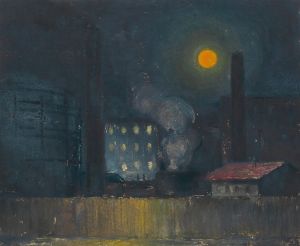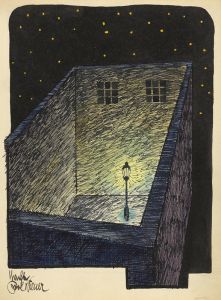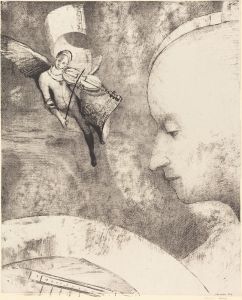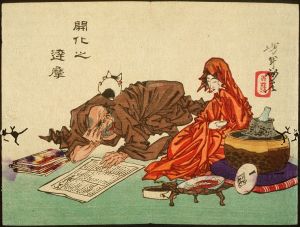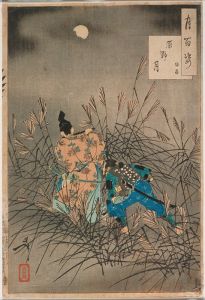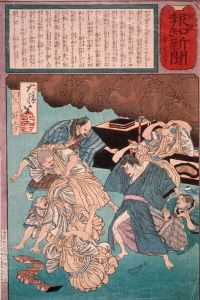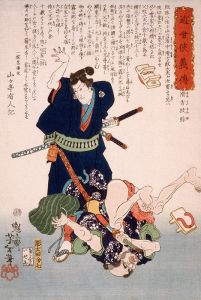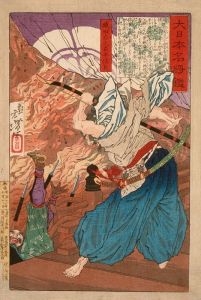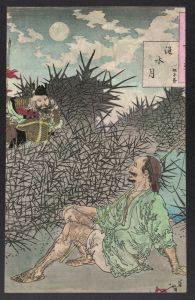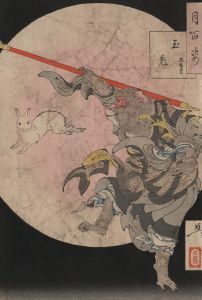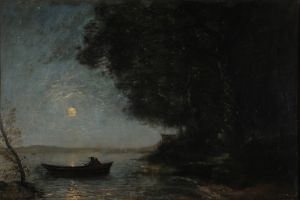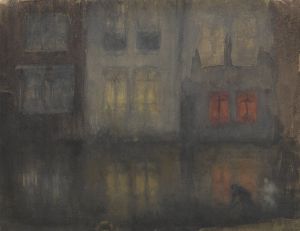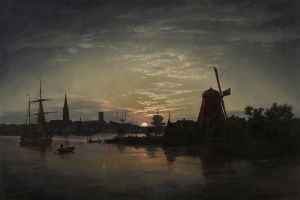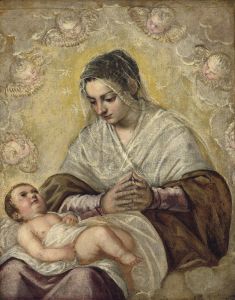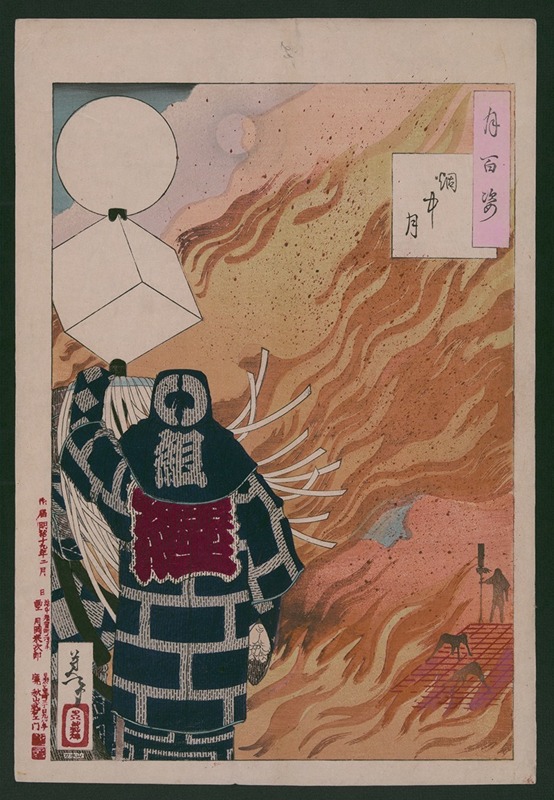
Enchū no tsuki
A hand-painted replica of Tsukioka Yoshitoshi’s masterpiece Enchū no tsuki, meticulously crafted by professional artists to capture the true essence of the original. Each piece is created with museum-quality canvas and rare mineral pigments, carefully painted by experienced artists with delicate brushstrokes and rich, layered colors to perfectly recreate the texture of the original artwork. Unlike machine-printed reproductions, this hand-painted version brings the painting to life, infused with the artist’s emotions and skill in every stroke. Whether for personal collection or home decoration, it instantly elevates the artistic atmosphere of any space.
"Enchū no tsuki" is a woodblock print by the renowned Japanese artist Tsukioka Yoshitoshi, part of his celebrated series "One Hundred Aspects of the Moon" (Tsuki hyakushi). This series, created between 1885 and 1892, is considered one of Yoshitoshi's masterpieces and a significant contribution to the ukiyo-e genre, which flourished during the Edo period and into the early Meiji era.
Tsukioka Yoshitoshi (1839–1892) was a pivotal figure in the transition from traditional ukiyo-e to modern Japanese art. His work is noted for its dynamic composition, innovative use of color, and psychological depth. Yoshitoshi's career spanned a period of great change in Japan, as the country opened to the West and underwent rapid modernization. Despite these changes, Yoshitoshi remained committed to traditional Japanese themes and techniques, which he revitalized through his unique artistic vision.
The "One Hundred Aspects of the Moon" series is a collection of 100 prints, each depicting a scene inspired by Japanese and Chinese history, literature, folklore, or mythology, all unified by the presence of the moon. The moon serves as a symbol of beauty, mystery, and the passage of time, and it is a recurring motif in Japanese art and poetry.
"Enchū no tsuki" translates to "Moon of the Lonely House" or "Moon in the Enclosed Garden," though specific details about the individual print are scarce. Like many of Yoshitoshi's works, it likely draws on historical or literary sources, capturing a moment of introspection or drama under the moonlight. The print exemplifies Yoshitoshi's skill in creating atmospheric scenes that evoke emotion and narrative depth.
Yoshitoshi's use of color and line in this series is particularly noteworthy. He employed a rich palette and intricate detailing to bring his subjects to life, often using the moonlight to cast a particular mood or highlight certain elements of the scene. His ability to convey complex emotions and stories through his prints has earned him a lasting legacy in the art world.
The "One Hundred Aspects of the Moon" series was produced during a time when the ukiyo-e tradition was in decline, challenged by the advent of photography and Western art forms. However, Yoshitoshi's work helped to sustain interest in woodblock printing and demonstrated the potential for traditional art forms to adapt and thrive in a changing cultural landscape.
Today, Yoshitoshi is celebrated as one of the last great masters of ukiyo-e, and his "One Hundred Aspects of the Moon" series is highly regarded by collectors and scholars alike. The prints are appreciated not only for their aesthetic beauty but also for their cultural and historical significance, offering insights into the themes and stories that captivated Japanese society during the late 19th century.
While specific information about "Enchū no tsuki" may be limited, it remains an integral part of Yoshitoshi's exploration of the moon's symbolic power and its connection to human experience. Through this series, Yoshitoshi invites viewers to reflect on the interplay between nature, emotion, and the passage of time, themes that continue to resonate with audiences today.





